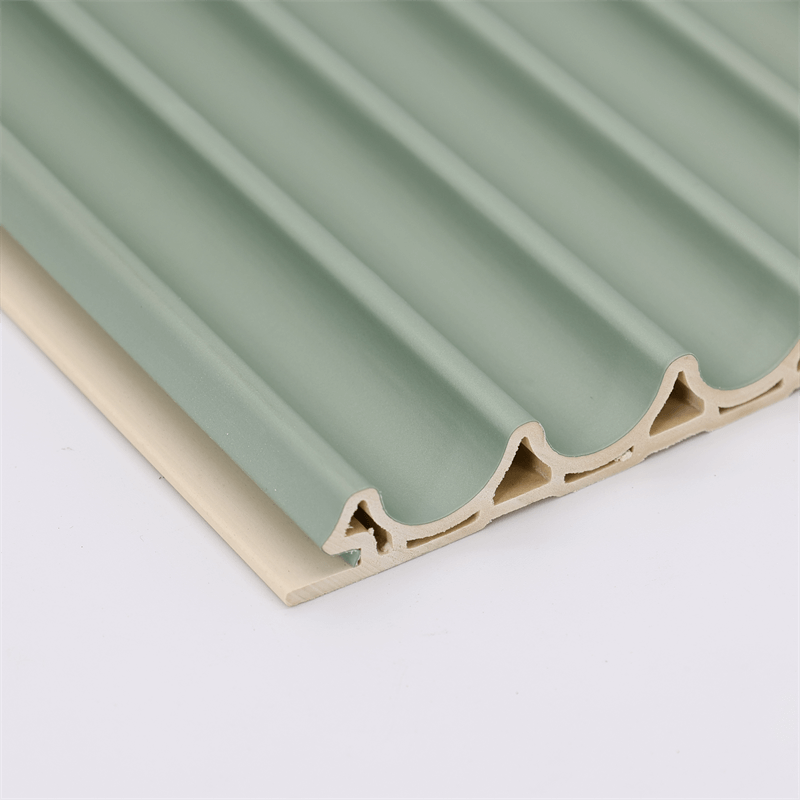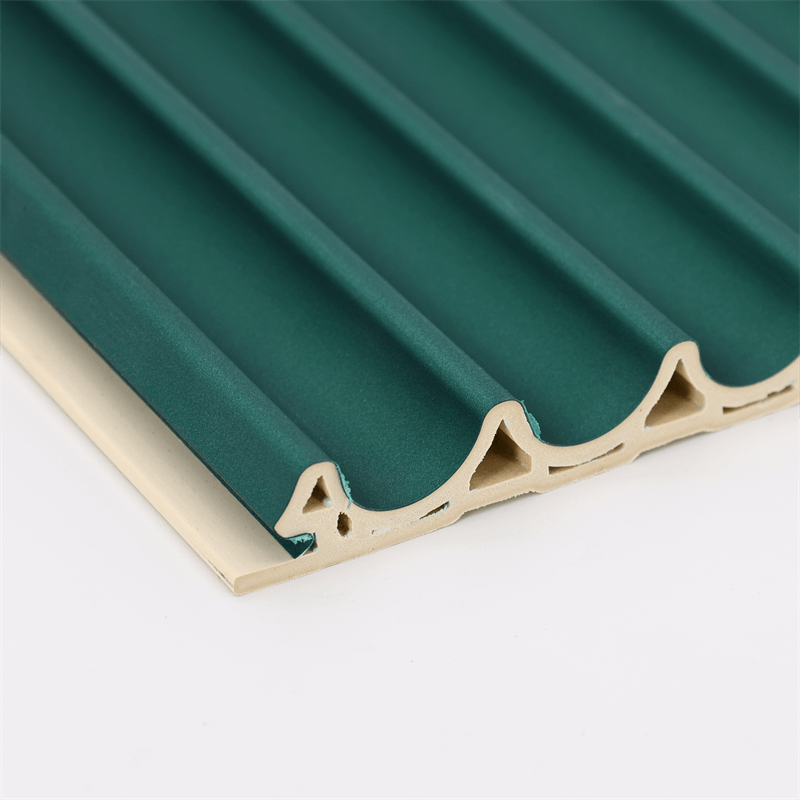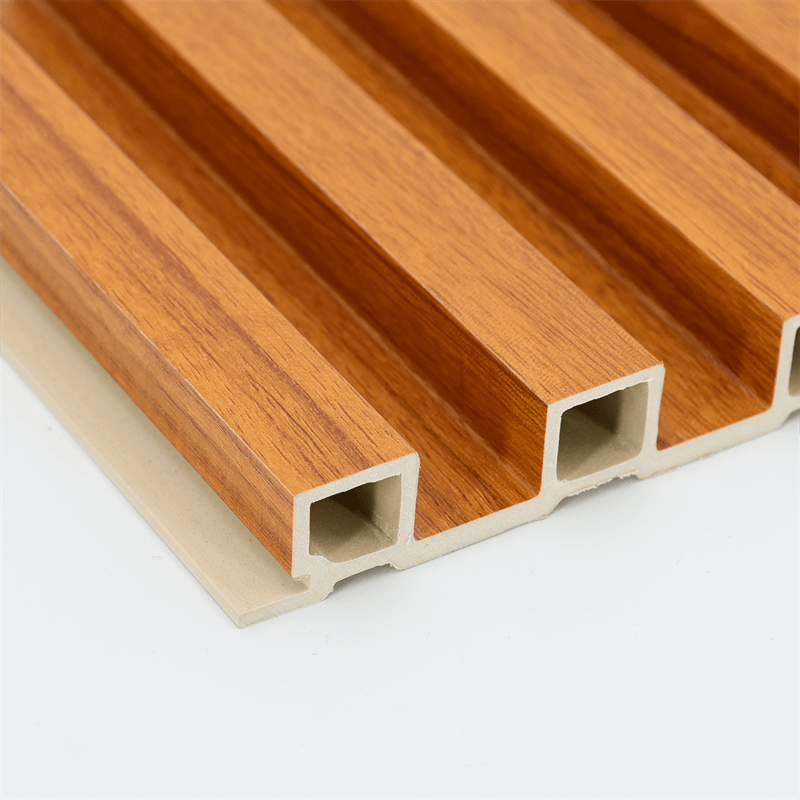Exterior walls play a vital role in protecting buildings from the elements while also contributing to the overall aesthetics and curb appeal.
Wood Plastic Composite (WPC) wall panels offer an excellent solution for exterior applications, providing a combination of style and weather resistance.
These panels are designed to withstand harsh weather conditions, including sunlight, moisture, and temperature fluctuations, while offering a range of design options to enhance the exterior appearance of buildings.
This essay explores the benefits of WPC wall panels for exterior applications, focusing on their weather resistance, design versatility, low maintenance requirements, and contribution to sustainability.
The essay is divided into four sections, each highlighting specific aspects of WPC wall panels for exterior use.
I. Weather Resistance for Longevity
- UV Stability: WPC wall panels are engineered to withstand prolonged exposure to sunlight without fading or discoloration. The panels are treated with UV stabilizers, which protect them from the damaging effects of UV rays. This UV stability ensures that the panels retain their original color and appearance over time, even in areas with intense sun exposure. By opting for WPC panels, buildings can maintain their vibrant and attractive exterior aesthetics for years to come.
- Moisture and Rot Resistance: Exterior walls are constantly exposed to moisture from rain, snow, and humidity. Traditional wall coverings, such as wood cladding or vinyl siding, can be susceptible to moisture absorption and subsequent rotting or warping. WPC wall panels, on the other hand, offer inherent moisture resistance, preventing water from seeping into the panels and causing damage. This moisture resistance ensures the longevity of the panels, reducing the need for frequent repairs or replacements due to rot or deterioration.
II. Design Versatility for Enhanced Exterior Aesthetics
- Aesthetic Appeal: WPC wall panels are available in a wide range of colors, finishes, and textures, allowing for versatile design options to suit various architectural styles. Whether a building calls for a modern, sleek look or a more traditional appearance, WPC panels can be customized to achieve the desired aesthetic. The panels can mimic the look of natural wood, providing a warm and inviting appeal, or they can be sleek and contemporary, complementing modern architecture.
- Cladding and Facade Applications: WPC wall panels are ideal for cladding and facade applications, transforming the exterior appearance of buildings. The panels can be installed vertically or horizontally, creating visually striking patterns and adding depth and texture to the facade. With their versatility in design, WPC panels can help achieve a distinctive and eye-catching exterior, making a lasting impression on passersby and visitors.
III. Low Maintenance Requirements for Easy Upkeep
- Stain and Fade Resistance: WPC wall panels are resistant to staining and fading, reducing the need for frequent cleaning and maintenance. Unlike traditional wall coverings that may require repainting or refinishing to maintain their appearance, WPC panels retain their color and integrity with minimal effort. Regular cleaning with mild detergent and water is usually sufficient to keep the panels looking fresh and vibrant.
- Easy Cleaning: WPC wall panels are designed for easy cleaning, saving time and effort in exterior maintenance. The smooth surfaces of the panels make them easy to wipe clean with a soft cloth or sponge. In cases of stubborn stains, a mild detergent can be used. The low maintenance requirements of WPC panels make them a practical choice for exterior applications, particularly in areas where access for maintenance is challenging.
IV. Sustainability and Environmental Benefits
- Recycled Materials: WPC wall panels are environmentally friendly as they are composed of recycled wood fibers or sawdust combined with recycled plastic materials. By opting for WPC panels, buildings can contribute to the reduction of waste and the conservation of natural resources. The use of recycled materials in WPC panels aligns with sustainable practices, reducing the environmental impact of construction and renovation projects.
- Energy Efficiency: WPC wall panels provide insulation properties, contributing to energy efficiency in buildings. The panels offer thermal insulation, reducing heat transfer and helping to maintain stable interior temperatures. This insulation effect reduces the reliance on heating and cooling systems, leading to energy savings and a reduced carbon footprint. By incorporating WPC panels into exterior applications, buildings can enhance their sustainability and promote responsible resource consumption.

WPC wall panels offer a combination of style and weather resistance, making them an excellent choice for exterior applications.
The weather resistance of WPC panels ensures the longevity of buildings, protecting them from the damaging effects of sunlight and moisture.
The design versatility of these panels allows for customized aesthetics, enhancing the exterior appearance of buildings and creating a lasting impression.
The low maintenance requirements of WPC panels simplify exterior upkeep, reducing the time and resources needed for maintenance tasks.
Furthermore, the use of recycled materials in WPC panels contributes to sustainability and environmentally responsible practices.
By utilizing WPC wall panels in exterior applications, buildings can achieve a balance between style and durability, creating visually appealing exteriors that withstand the test of time and weather.
The versatility, low maintenance, and sustainability of WPC panels make them a valuable asset for architects, contractors, and building owners seeking to enhance the exterior aesthetics and performance of their structures.


